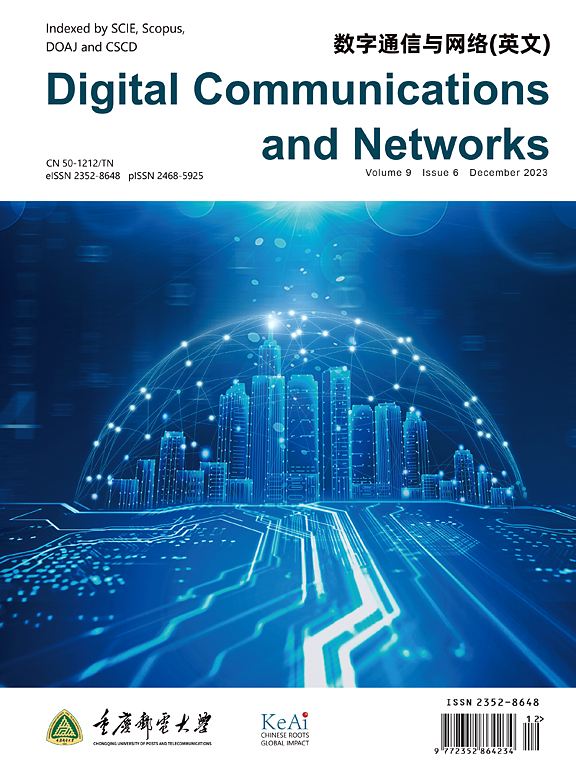用于沉浸式元宇宙体验的感知点云质量评估
IF 7.5
2区 计算机科学
Q1 TELECOMMUNICATIONS
引用次数: 0
摘要
点云的感知质量评估是沉浸式元宇宙体验的关键,也是一项具有挑战性的任务。首先,由于点云是由非结构化的三维点组成的,使得拓扑结构更加复杂。其次,质量损害通常涉及几何属性和颜色属性,其中几何畸变的测量变得更加复杂。基于人类视觉系统(HVS)的感知特征和点云的内在特征,提出了一种感知点云质量评价模型。首先对点云进行预处理,利用基于图滤波的重采样提取几何骨架关键点,然后利用k近邻聚类方法构建几何骨架关键点周围的局部相邻区域。对于几何畸变,提取点特征直方图(PFH)作为特征描述符,计算参考文献中相应局部相邻区域PFH与畸变点云之间的震源距离(EMD)作为几何质量度量。对于颜色失真,计算相应的局部相邻区域之间的统计矩作为颜色质量度量。最后,将几何质量测量和色彩质量测量的线性加权聚合得到全局感知质量评估模型。在大量数据集上的实验结果表明,该方法在计算时间较短的情况下取得了领先的性能。同时,实验结果也证明了该方法对各种失真类型的鲁棒性。源代码可从https://github.com/llsurreal919/PointCloudQualityAssessment获得。本文章由计算机程序翻译,如有差异,请以英文原文为准。
Perceptual point cloud quality assessment for immersive metaverse experience
Perceptual quality assessment for point cloud is critical for immersive metaverse experience and is a challenging task. Firstly, because point cloud is formed by unstructured 3D points that makes the topology more complex. Secondly, the quality impairment generally involves both geometric attributes and color properties, where the measurement of the geometric distortion becomes more complex. We propose a perceptual point cloud quality assessment model that follows the perceptual features of Human Visual System (HVS) and the intrinsic characteristics of the point cloud. The point cloud is first pre-processed to extract the geometric skeleton keypoints with graph filtering-based re-sampling, and local neighboring regions around the geometric skeleton keypoints are constructed by K-Nearest Neighbors (KNN) clustering. For geometric distortion, the Point Feature Histogram (PFH) is extracted as the feature descriptor, and the Earth Mover's Distance (EMD) between the PFHs of the corresponding local neighboring regions in the reference and the distorted point clouds is calculated as the geometric quality measurement. For color distortion, the statistical moments between the corresponding local neighboring regions are computed as the color quality measurement. Finally, the global perceptual quality assessment model is obtained as the linear weighting aggregation of the geometric and color quality measurement. The experimental results on extensive datasets show that the proposed method achieves the leading performance as compared to the state-of-the-art methods with less computing time. Meanwhile, the experimental results also demonstrate the robustness of the proposed method across various distortion types. The source codes are available at https://github.com/llsurreal919/PointCloudQualityAssessment.
求助全文
通过发布文献求助,成功后即可免费获取论文全文。
去求助
来源期刊

Digital Communications and Networks
Computer Science-Hardware and Architecture
CiteScore
12.80
自引率
5.10%
发文量
915
审稿时长
30 weeks
期刊介绍:
Digital Communications and Networks is a prestigious journal that emphasizes on communication systems and networks. We publish only top-notch original articles and authoritative reviews, which undergo rigorous peer-review. We are proud to announce that all our articles are fully Open Access and can be accessed on ScienceDirect. Our journal is recognized and indexed by eminent databases such as the Science Citation Index Expanded (SCIE) and Scopus.
In addition to regular articles, we may also consider exceptional conference papers that have been significantly expanded. Furthermore, we periodically release special issues that focus on specific aspects of the field.
In conclusion, Digital Communications and Networks is a leading journal that guarantees exceptional quality and accessibility for researchers and scholars in the field of communication systems and networks.
 求助内容:
求助内容: 应助结果提醒方式:
应助结果提醒方式:


